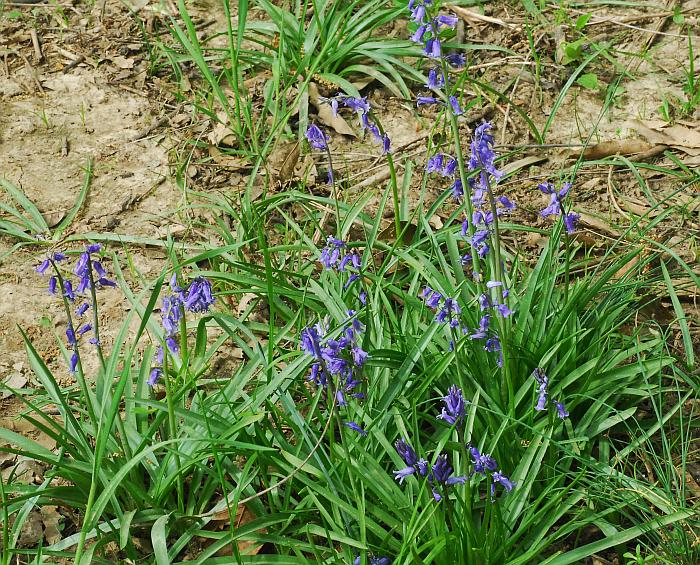Hyacinthoides non-scripta (L.) Chouard
English Bluebell

Introduced
CC =
CW =
MOC = 1
© SRTurner
Hyacinthoides non-scripta (L.) ChouardEnglish Bluebell | |
 |
Introduced CC = CW = MOC = 1 |
© SRTurner |
|
Family - Liliaceae Habit - Perennial forb from a bulb.
Stems - None.
Leaves - Basal rosette of 6-12 leaves, linear, 7-16 mm wide, flat or slightly folded longitudinally, glabrous.
Inflorescence - Raceme on scape to 50 cm, the flowers on stalks and subtended by bracts, these narrowly triangular to linear, blue.
Flowers - Perianth narrowly bell-shaped, the lobes flaring to recurved at the tips, blue, fragrant. Stamens 3.
Fruits - Capsules, subglobose, 3-lobed, loculicidally dehiscenct. Seeds 3-30, black, globose to ellipsoid.
Flowering - April - May. Habitat - Old gardens and homesites, escaped or persisting from former cultivation. Origin - Native to Europe. Lookalikes - Hyacinthus orientalis, other cultivated species and forms. Other info. - This plant probably does not occur in Missouri except under cultivation, or persisting from former cultivation. Naturalized populations exist in the Great Lakes region and the Pacific Northwest. The plant is highly regarded in the U.K., where it is protected by law and considered an indicator species of old-growth forest. The leaves contain an array of secondary metabolites, including glycosides and alkaloids, and should be considered toxic. Photographs taken at Shaw Nature Reserve, Franklin County, MO, 5-8-2014, 4-27-2021, 5-5-2021 and 4-18-2025 (SRTurner). |